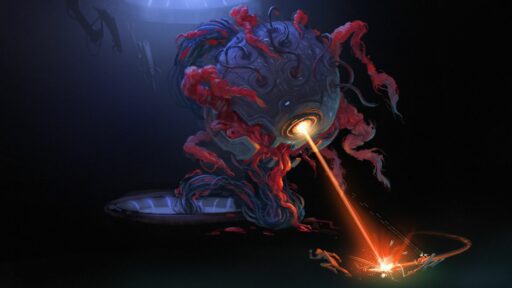Sandbox gaming has evolved from simple pixelated landscapes to vast, photorealistic worlds, offering players unparalleled freedom and creativity. As the genre continues to expand, it’s essential to explore the latest trends that are shaping its future. From the impact of indie developers to the integration of video games in cultural institutions, sandbox gaming is not just about play but also about expression and innovation. This article delves into the multifaceted nature of sandbox games, highlighting the evolution, cultural recognition, community collaboration, innovative narratives, and the challenges and opportunities that lie ahead.
Key Takeaways
- Sandbox gaming has transitioned from its humble beginnings to creating expansive, immersive worlds with photorealistic graphics and endless possibilities.
- Indie developers and procedural generation play crucial roles in driving the creativity and diversity of experiences within sandbox games.
- Cultural institutions like MoMA are beginning to recognize video games for their artistic merit, bridging the gap between traditional art and interactive media.
- Community-driven content, modding, and social media have significantly influenced sandbox gaming, fostering collaboration and shared storytelling.
- The future of sandbox gaming faces challenges in balancing player freedom with narrative structure and addressing intellectual property issues in user-generated content.
The Evolution of Sandbox Gaming

From Pixelated Beginnings to Photorealistic Worlds
The sandbox gaming genre has undergone a remarkable transformation over the years. From the charming simplicity of pixel art to the stunning realism of current graphics engines, the visual evolution of these games is a testament to the advancements in technology and design philosophy. Sandbox games began with rudimentary visuals, where each blocky, pixelated sprite held a nostalgic charm that still resonates with gamers today.
The shift towards photorealism has been gradual but impactful, offering players immersive experiences that blur the line between game and reality. This progression can be seen in the increasing resolution and complexity of game textures, lighting effects, and character models. The table below highlights key milestones in this visual journey:
| Year | Milestone | Description |
|---|---|---|
| 1984 | Debut of Pixel Art | Introduction of 8-bit graphics in sandbox games |
| 1997 | 3D Sandbox Worlds | First 3D sandbox games with polygonal graphics |
| 2010 | HD Graphics | High-definition textures and realistic lighting |
| 2020 | Ray Tracing | Real-time lighting and reflections for lifelike visuals |
The pursuit of photorealism in sandbox games is not just about aesthetics; it’s about creating a canvas where players can express their creativity in worlds that feel as tangible as our own.
While the allure of pixel art remains, the industry’s push towards more lifelike environments has opened up new possibilities for storytelling and player engagement. The challenge for developers now lies in balancing the nostalgic appeal of pixelated graphics with the demand for ever-more sophisticated visual experiences.
The Impact of Indie Developers on Sandbox Creativity
Indie developers have been pivotal in expanding the horizons of sandbox gaming. Their unique visions and willingness to take risks have resulted in a plethora of innovative experiences that challenge the status quo of mainstream titles. These creators often operate with limited resources, yet they manage to infuse their games with a distinct personality and depth that resonate with players on a personal level.
The indie scene has given rise to games that blend genres, introduce new mechanics, and offer fresh narratives. For instance, the success of Night in the Woods underscores the indie community’s ability to craft games with compelling stories and relatable characters, all within the sandbox framework. This title, among others, showcases the indie developers’ knack for creating immersive worlds that players can explore and interact with in meaningful ways.
- Cavegirl’s Game Stuff
- La Frikoteca
- Librarians and Leviathans
- UFO Press
- Uncaring Cosmos
These are just a few examples of indie developers and bloggers who are pushing the boundaries of what sandbox games can be. Their contributions are not only enriching the gaming landscape but also shaping the future of the genre.
In this dynamic environment, indie game developers will continue to demonstrate creativity and inventiveness, crafting even more engaging and innovative games.
Procedural Generation: Infinite Possibilities
The advent of procedural generation has revolutionized the sandbox gaming landscape. Players now encounter a unique world each time they start a game, ensuring a fresh experience with every playthrough. This technology not only creates vast landscapes but also populates them with dynamic ecosystems and unpredictable challenges.
Procedural generation involves a collaborative approach, enhancing rather than replacing human creativity. It’s a tool that empowers developers to craft worlds that can evolve and surprise, offering gamers endless exploration and discovery.
Here’s a glimpse into how procedural generation impacts various aspects of sandbox games:
- Map Variability: Each game world is distinct, with terrain, biomes, and landmarks that are generated on-the-fly.
- Resource Distribution: The placement of resources and items is randomized, making survival and strategy a unique challenge.
- AI Behavior: Non-player characters (NPCs) and creatures exhibit varied behaviors, making each interaction unpredictable.
Finally, the rise of procedural generation in base building games ensures that no two playthroughs are the same. Maps, resource locations, and even AI behavior are tailored to create a one-of-a-kind adventure, uniting players in their quest to conquer ever-changing creative worlds.
Cultural Recognition and Artistic Merit

MoMA’s Inclusion of Video Games as Art
The Museum of Modern Art (MoMA) has made a bold move by exhibiting video games as a legitimate art form, bridging the gap between traditional art enthusiasts and contemporary digital creators. This pioneering step by MoMA has sparked conversations about the artistic value and cultural significance of video games.
The inclusion of video games in MoMA’s collection is not just a nod to their aesthetic appeal, but also an acknowledgment of their complexity and the creativity involved in their creation.
Despite the excitement, integrating video games into the traditional art world presents challenges. Curators and critics grapple with evaluating the cultural impact of games and overcoming legal and technological barriers. The list below highlights some of the key challenges faced:
- Assessing the artistic merit of interactive mediums
- Preserving the dynamic nature of games in a static exhibit
- Navigating copyright issues with game developers and artists
- Ensuring the longevity and playability of digital works in a museum setting
The British Old School: A Unique Gaming Heritage
The British gaming scene has long been characterized by its distinctive approach to sandbox gaming, often reflecting a penchant for innovation and a unique flavor of creativity. Elite, a pioneering space trading video game, exemplifies this tradition. Developed by David Braben and Ian Bell, it was a game that pushed the boundaries of what was possible in the early days of gaming, setting a precedent for future sandbox games.
The ‘British Old School’ is not just a term but a testament to a gaming culture that thrived on experimentation and personal interpretation. Games from this era weren’t just played; they were explored and expanded upon by their communities. This tradition is evident in the way that games like OD&D have been adapted and reinterpreted over time, with each iteration reflecting the unique vision of its creators.
- UFO Press – Known for games like Legacy, which reimagined post-apocalyptic storytelling.
- Uncaring Cosmos – A blog that delves into the distinct features of the British Old School roleplaying.
The essence of the British Old School lies in its ability to inspire gamers to not only engage with the game’s content but to become creators in their own right.
Video Games in Academic Discourse
The academic world has begun to recognize the multifaceted nature of video games, not only as a form of entertainment but also as a potent tool for education and research. The impact of digital educational games on student’s motivation for learning has sparked considerable interest among scholars. These games, based on computer and Internet technologies, are highly favored by educators and students alike due to their unique learning methods and the engaging experiences they provide.
In the realm of academic discourse, video games are now subjects of serious study, with research papers and conferences dedicated to exploring their narrative structures, design principles, and cultural impacts. The following list highlights key areas of academic focus:
- The narrative potential of video games as interactive storytelling mediums
- The psychological effects of gameplay on cognition and behavior
- The sociocultural implications of gaming communities
- The educational value of gamification and serious games
The exploration of video games in academic settings underscores their growing legitimacy as a medium that transcends mere play.
As video games continue to evolve, they challenge traditional notions of media and art, inviting scholars to consider them within broader cultural and educational contexts.
Community and Collaboration in Sandbox Games

Player-Driven Content and Modding
The sandbox gaming landscape has been profoundly shaped by the contributions of its players. Modding communities have become the backbone of longevity for many titles, transforming games into canvases for creativity and innovation. These communities often start with simple tweaks and can evolve into complex overhauls that keep games fresh and engaging years after their initial release.
- Mod Creation: Players design new game assets, mechanics, or storylines.
- Community Collaboration: Gamers come together to build mods, often leading to unexpected and groundbreaking results.
- Sharing Platforms: Websites and forums dedicated to mod sharing become hubs for player interaction.
- Feedback Loop: Developers take cues from mods to improve and update their games.
The symbiotic relationship between players and developers fosters an environment where both can thrive. It’s a cycle of inspiration and implementation that pushes the boundaries of what sandbox games can be.
The rise of player-driven content has also sparked discussions about the ownership and monetization of mods. While some developers embrace the modding community, others are more protective of their intellectual property. This tension creates a dynamic field where the rules are constantly being rewritten, and the impact on the gaming culture is significant.
The Role of Social Media in Sandbox Gaming Communities
The integration of social media into the fabric of sandbox gaming has revolutionized the way players interact and share experiences. Platforms like Facebook and Twitter have become pivotal in fostering communities that extend beyond the game itself. These social networks act as hubs for sharing tips, organizing in-game events, and showcasing creative endeavors.
- Growth of online communities
- Sharing of user-generated content
- Organization of collaborative events
Social media has not only amplified the reach of sandbox gaming communities but also provided tools for collaboration and collective storytelling. The ability to instantly share screenshots, videos, and live streams means that players can now engage with a global audience, turning solitary play into a shared cultural moment.
The rise of gaming culture is inextricably linked to the growth of these online communities, where players are not just consumers but active participants in the gaming narrative.
Collaborative World-Building and Storytelling
In the realm of sandbox gaming, collaborative world-building and storytelling have become cornerstones of player engagement. Gamers are not just consumers but active participants, shaping the narrative and environment through their actions and creativity.
- My Journey into Worldbuilding for a Tabletop RPG Setting: This title encapsulates the essence of collaborative creation. Players often recount their experiences, noting how they’ve learned about storytelling and improvisation. The growth and evolution of their creations, like the ‘1000 Isles’, exemplify the dynamic nature of these collaborative efforts.
Sandbox games offer a unique canvas where the collective imagination of players can manifest into complex, living worlds. Each contribution adds a layer to the game’s lore, making the experience deeply personal and ever-evolving.
The table below showcases a variety of popular sandbox games and the tools they provide for community-driven world-building:
| Game Title | World-Building Tools | Community Features |
|---|---|---|
| Game A | Map Editor, Modding | Forums, Workshops |
| Game B | Terrain Sculpting | Collaborative Quests |
| Game C | Storyline Customization | Shared Universes |
These games illustrate the shift from solitary play to a shared creative journey, where the boundaries between player and creator blur.
Innovative Narratives and Game Mechanics

Sandbox Games as a Platform for Experimental Storytelling
Sandbox games have become a fertile ground for experimental storytelling, offering a unique canvas where narratives can unfold in unpredictable ways. Unlike traditional linear games, sandbox games provide a framework within which players can create and manipulate their own stories, leading to a diverse range of narrative experiences.
- Psychological horror
- Cosmic horror
- Body horror
These are just a few of the narrative styles that players can explore within the sandbox genre. The promise of freedom in story games is not just about the vastness of the world, but the depth of the stories that can be told within it.
Sandbox games challenge the conventional boundaries of storytelling in video games, allowing for a more personal and immersive experience.
With the integration of simulated physics and other dynamic systems, sandbox games offer a level of interactivity that can significantly enhance the storytelling process. Players are not just passive recipients of a story; they become active participants, shaping the narrative through their actions and decisions.
Emerging Trends in Game Design and Player Interaction
In the ever-evolving landscape of sandbox gaming, emerging trends in game design and player interaction are shaping the future of the genre. One notable trend is the integration of more complex AI systems, which allows for dynamic and responsive game worlds that challenge the player in new ways. Another is the incorporation of virtual reality (VR) and augmented reality (AR), offering immersive experiences that were once the stuff of science fiction.
- Complex AI Systems: Enhancing NPC behaviors and world dynamics
- VR and AR Integration: Providing immersive and interactive environments
- Social Gaming Features: Encouraging collaboration and competition
- Adaptive Storytelling: Tailoring narratives to player choices
The convergence of these trends is not just transforming the way games are played, but also how they are perceived in the broader cultural context.
Developers are also experimenting with social gaming features that encourage both collaboration and competition within the sandbox environment. Adaptive storytelling, where the narrative changes based on player choices, is becoming more prevalent, offering a personalized gaming experience. These innovations are not only captivating players but also pushing the boundaries of what is possible in game design.
The Rise of Cross-Genre Sandbox Experiences
The sandbox gaming landscape is witnessing a transformative trend with the emergence of cross-genre experiences. These innovative games blend elements from various genres, creating unique and dynamic gameplay that defies traditional categorization. For instance, a game might combine the open-world exploration of a sandbox with the strategic depth of a real-time strategy game, or the narrative richness of an RPG with the survival mechanics of an adventure game.
- Visionary Realms and Intrepid Studios are at the forefront of this movement, currently developing titles that promise to redefine the boundaries of sandbox MMORPGs.
- The integration of different genres not only enriches the player’s experience but also opens up new avenues for creativity and player engagement.
The synergy between diverse gameplay elements in these cross-genre sandbox games is not just a novelty; it’s a testament to the evolving nature of interactive entertainment.
As developers continue to experiment with genre fusion, players can anticipate a future where the sandbox gaming experience is limited only by the imagination. The table below showcases some of the most anticipated cross-genre sandbox MMORPGs currently in development:
| Studio | Status | Notable Projects |
|---|---|---|
| Visionary Realms | In Development | Everquest, Vanguard: Saga of Heroes |
| Intrepid Studios | In Development | World of … |
Challenges and Opportunities in Sandbox Game Development

Balancing Freedom with Structure
In the realm of sandbox gaming, developers are constantly grappling with the challenge of providing players with enough freedom to foster creativity while imposing sufficient structure to guide gameplay. The sweet spot between these two elements is crucial for a satisfying gaming experience. A common dilemma in educational game design, as seen in titles like Minecraft, is identifying the right balance between freedom and structure to promote constructive learning.
- Too much freedom can lead to a lack of direction and overwhelm players.
- Excessive structure may stifle creativity and reduce engagement.
- A well-balanced game offers clear objectives with room for personal expression.
The key to successful sandbox game design lies in crafting a world that feels alive and responsive, yet still provides clear goals and challenges to keep players invested.
Finding this equilibrium is not just a creative endeavor but also a technical one, as it involves intricate game mechanics and player psychology. The ongoing debate on this topic reflects the complexity of game design and the diverse preferences of the gaming community.
Intellectual Property Issues in User-Generated Content
The rise of user-generated content in sandbox games has led to a complex landscape of intellectual property (IP) rights. Players are not only consumers but also creators, crafting unique items, characters, and even entire worlds. This enthusiasm opens up new opportunities for monetizing intellectual property in digital gaming in innovative ways.
However, the legal framework surrounding user creations is often murky. Issues arise when players’ creations infringe on existing copyrights or when games facilitate the creation of derivative works without proper licensing. The following points highlight key concerns:
- Determining the ownership of user-generated content
- Navigating copyright laws for derivative works
- Balancing creators’ rights with the freedom to innovate
The challenge lies in crafting policies that protect IP while fostering the creative spirit that is central to sandbox gaming.
As the industry evolves, so too must the approach to IP in gaming. Developers and legal experts are working together to find equitable solutions that respect the rights of all parties involved.
The Future of Sandbox Gaming Technology
As we look to the horizon of sandbox gaming, the integration of advanced technologies is set to redefine the boundaries of player engagement and creativity. Virtual and augmented reality are poised to offer immersive experiences that blur the line between the game world and the real one.
- Virtual Reality (VR) headsets becoming more affordable and accessible
- Augmented Reality (AR) applications expanding the playground into the real world
- Artificial Intelligence (AI) driving more dynamic and responsive game environments
The convergence of these technologies will not only enhance the sensory experience but also empower players to interact with game worlds in unprecedented ways.
The potential for AI to revolutionize sandbox games is particularly intriguing. With AI’s ability to learn and adapt, game worlds could evolve based on player actions, leading to a truly dynamic and ever-changing landscape. This could mean the end of static environments, as each player’s journey shapes the world in unique ways.
Conclusion
As we’ve delved into the evolving landscape of sandbox gaming, it’s clear that the genre is not just surviving but thriving with innovation and creativity. From the indie gems of Cavegirl’s Game Stuff to the thought-provoking discussions on Tales to Astound!, the community continues to push boundaries and explore new possibilities. MoMA’s recognition of video games as art underscores the cultural significance of gaming, while the latest trends, such as the Shadow of the Erdtree DLC for Elden Ring, keep players engaged and the industry vibrant. Sandbox gaming, with its open-ended exploration and player-driven narratives, remains a fertile ground for creativity, reflecting the zeitgeist and even shaping it. As we look to the future, it’s exciting to consider what new trends will emerge and how they will continue to redefine our understanding of interactive entertainment.
Frequently Asked Questions
How has sandbox gaming evolved from its early stages to present day?
Sandbox gaming has evolved from simple, pixelated beginnings to offering expansive, photorealistic worlds. This evolution has been driven by advancements in technology, the impact of indie developers, and the introduction of procedural generation, allowing for virtually infinite possibilities in gameplay.
What role have indie developers played in sandbox gaming?
Indie developers like Emily Allen (Cavegirl) and Carlos de la Cruz have been pivotal in sandbox gaming, introducing innovative ideas and pushing creative boundaries. Their contributions have significantly impacted the diversity and depth of sandbox experiences available to players.
In what ways are video games recognized as an art form?
Video games have gained cultural recognition as an art form with institutions like MoMA including them in their exhibits. This move acknowledges the artistic merit of video games and their capacity to bridge the gap between traditional art and modern digital creativity.
How do player communities contribute to sandbox games?
Player communities are essential to sandbox games, contributing through content creation, modding, and collaborative world-building. Social media plays a significant role in these communities by facilitating communication, sharing ideas, and fostering collaborative storytelling.
What are the latest trends in sandbox game narratives and mechanics?
The latest trends in sandbox games include the use of the genre as a platform for experimental storytelling, the emergence of new game design techniques that enhance player interaction, and the rise of cross-genre experiences that blend sandbox elements with other gaming styles.
What challenges do sandbox game developers face?
Sandbox game developers face challenges such as balancing player freedom with game structure, dealing with intellectual property issues related to user-generated content, and keeping up with the rapid advancements in gaming technology to deliver innovative experiences.




